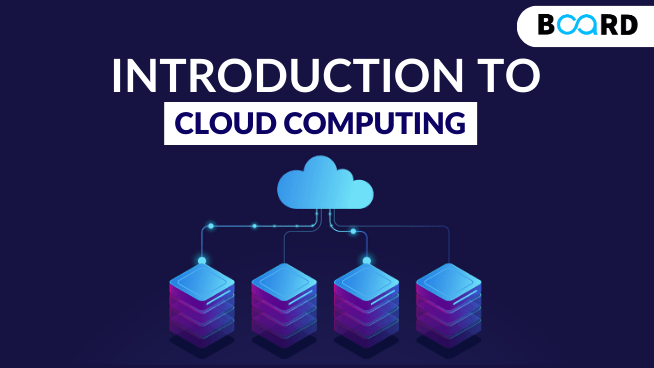Cloud Computing Fundamentals: Introduction and Core Principles
Introduction To Cloud Computing

In the world of digital transformation, Cloud computing stands tall, yet remains a concept that's occasionally met with skepticism. As we move ahead, the global public cloud computing market shows no signs of slowing down, aiming to reach a noteworthy 397 billion U.S dollars by 2022.
1. What is meant by Cloud Computing?
Cloud computing is the on-demand delivery of IT resources such as storage, processing power, etc. Over the Internet with a pay-as-you-go pricing model.
To make it simple, let us understand it with an example. Suppose you have a startup idea and you have good faith in it. So you plan to execute it now, and you decide to buy all the infrastructure as per your business needs. There are two ways in which your business can go either it fails miserably, or it booms and grows exponentially.
If it fails, then all the investment you did in your infrastructure would be misspent.
But if it grows, then you need to add more resources to your existing infra i.e. you need more computing power and storage. Today businesses are thriving and dwindling every minute, and if you have minutes of downtime, that means a loss for your business.
So that's where the Cloud computing vendors like AWS, Azure, GCP, and Salesforce come in. Vendors like AWS, Azure, and GCP provide you with their infrastructure that you can use as per your need, and you have to pay only for the resources you use.
Furthermore, with the expanding need for data storage and management, integrating tools like email archiving software becomes paramount in the cloud strategy, ensuring seamless access and security for organizational communications.
2. History of Cloud Computing
In 1999, Salesforce became the first company to offer applications to enterprises over the internet. Soon in 2002, Amazon started Amazon Web Services that were providing storage and computation.
Publicly launched on March 19, 2006, AWS offered Simple Storage Service (S3) and Elastic Compute Cloud (EC2). Enabling people to rent a virtual computer and use them.
Today, AWS has more than 200 fully-featured cloud services for a variety of technologies and industries. AWS ranks as one of the most popular public cloud infrastructure and platform services running applications worldwide in 2020, ahead of Azure and Google cloud services. AWS is one of the hefty revenue segments for Amazon that generated 45 billion U.S dollars in 2020 net sales.
3. Types of Cloud Computing services
The list of available cloud computing services is vast, but most fall into Saas, Iaas, Paas, Faas.
- Software-as-a-Service (SaaS): This model delivers software applications via the internet, directly through web browsers. Popular examples include Google G Suite and Microsoft Office 365. The primary benefit here is the irrelevance of the underlying hardware and OS for users; the focus remains solely on software utilization.
- Infrastructure-as-a-Service (IaaS): A service catering to comprehensive business infrastructure needs. Providers like AWS, Azure, and GCP proffer scalable databases, storage, and VPNs. It's ideal for companies starting from scratch, desiring control over most resources. Amazon Web Services stands out as the pioneer and continues to lead this space.
- Platform-as-a-Service (PaaS): Tailored for developers, PaaS includes tools vital for app creation. It encompasses storage, networking, virtual servers, and development tools. With PaaS, developers can concentrate on coding and testing without concerning themselves with infrastructure nuances. Some examples are AWS Elastic Beanstalk, Heroku, and Google App Engine.
4. Cloud Deployment Model
There are mainly three types of cloud environments, also known as cloud deployment models. Businesses or individuals can choose to run applications on public, private, or hybrid clouds depending on their requirements. Additionally, incorporating cloud-based predictive analytics can enhance decision-making by providing real-time insights and forecasting trends based on vast amounts of data processed in the cloud.
- Public Cloud: A shared platform accessible to clients or the general public, offering vast computing power online. Not only is it cost-effective, but it's also managed by renowned entities like AWS, Microsoft Azure, and Google Cloud.
- Private Cloud: Often referred to as the internal cloud, it facilitates computing services within a company's boundaries, ensuring control over data location and structure. Best suited for firms with sensitive data, it assures heightened security.
- Hybrid Cloud: A blend of the public and private clouds, the hybrid model lets companies leverage the strengths of both. While routine tasks might be managed by the public cloud, critical operations remain confined to the private one.
Conclusion
Cloud computing has provided many solutions that are useful for organizations and individuals. It helps by providing solutions for businesses at the bare minimum cost possible. Learning cloud computing technologies such as AWS can open doors to massive opportunities, as we are already using cloud computing services for various use cases, and it's likely to grow more in the near future.
To further enhance your cloud strategy and ensure seamless integration of various services, consider exploring cloud consulting services for tailored solutions that meet your specific business needs.
By understanding and leveraging the different types of cloud computing services and deployment models, businesses can better prepare for the future and stay ahead in the ever-evolving digital landscape.
